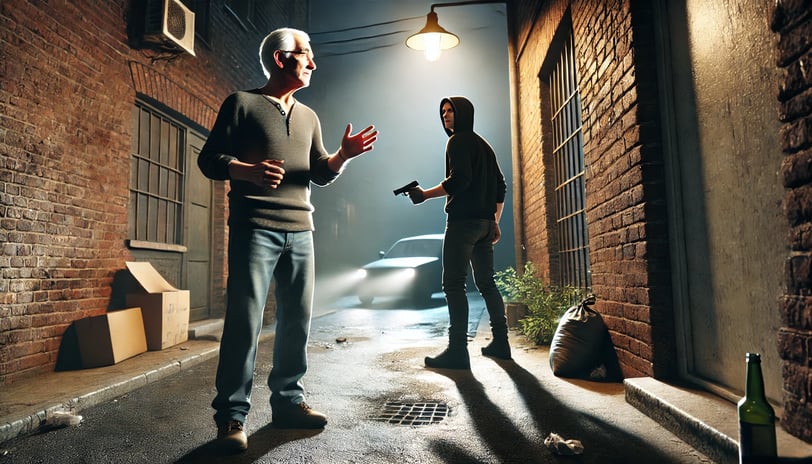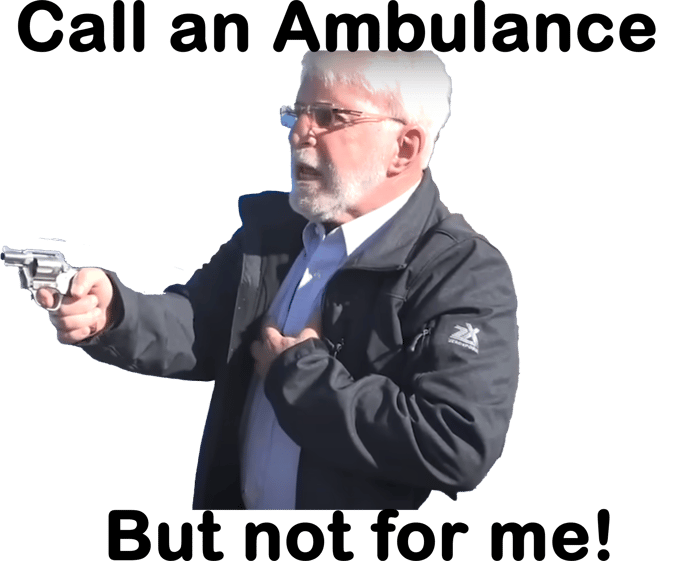Grab your fan gear at discounts!
Practical Self-Defense Techniques for Seniors: Staying Safe During a Robbery
Learn simple, effective self-defense techniques for seniors to stay safe during robberies or dangerous situations. Tips include moves, tools, and prevention strategies.
Mel Schwartz
1/19/20254 min read


Introduction
As we age, our sense of personal safety often becomes a growing concern. While it’s true that older adults may face unique challenges when it comes to physical confrontations, there are still plenty of ways to stay safe and prepared. With the right strategies and tools, seniors can feel more empowered to navigate potentially threatening situations, such as a robbery, with confidence.
The goal of this article is to provide practical self-defense techniques that don’t rely on brute strength or agility. Instead, we’ll focus on strategies that prioritize safety, simplicity, and awareness—ensuring that older adults can stay calm, protect themselves effectively, and avoid harm during dangerous encounters.
Read on to discover actionable techniques, de-escalation tips, and self-defense tools that are tailored to seniors. Staying safe starts with being prepared!
1. Understanding the Situation: The Priority is Safety
When faced with a robbery or threatening situation, the number one priority is your safety. Most criminals are motivated by valuables rather than violence, so avoiding physical confrontation whenever possible is the best course of action. By complying and handing over your belongings, you significantly reduce the risk of harm. Remember, material items can be replaced—your life cannot.
That said, staying calm is easier said than done during a stressful encounter. Here are a few tips to help you remain composed:
Take a deep breath. Focus on slowing your breathing, which can help you think more clearly.
Comply without hesitation. Avoid sudden or aggressive movements that could startle the attacker.
Avoid direct eye contact. Instead, keep your focus slightly downward to avoid provoking the attacker while staying aware of their movements.
If compliance fails or if the situation escalates to physical danger, having a few simple self-defense techniques at your disposal can make all the difference. Let’s explore these in the next section!
2. Simple, Effective Self-Defense Techniques for Seniors
a. Palm Strike
Use the base of your palm to strike the attacker’s nose or chin in an upward motion.
This move doesn’t strain the fingers or wrist, making it easy and effective for seniors.
The goal is to surprise the attacker and create an opportunity to escape.
b. Kick to the Shins or Knees
A quick, low kick to the attacker’s shin or knee can cause enough pain to disorient them temporarily.
Aim for the lower body—this requires less precision and avoids overextending yourself.
c. Elbow Strikes
If the attacker is within arm’s reach, use your elbow to hit sensitive areas like the ribs or face.
This is an excellent close-range move that uses minimal effort but delivers significant impact.
d. Targeting Soft Spots
Attackers are most vulnerable in areas like the eyes, nose, and groin.
Use your fingers to jab at the eyes or aim strikes at the nose bridge to incapacitate them.
e. Escaping Grabs
If grabbed by the wrist, twist your arm toward the attacker’s thumb—the weakest part of their grip.
Use your free hand to push or strike them, then move quickly away.
3. De-escalation Tactics and Non-Physical Responses
a. Use a Loud, Firm Voice
Say something like “Back off!” or “Leave me alone!” loudly and confidently.
This can startle the attacker and attract attention from others nearby.
b. Toss Your Valuables Away
If the attacker demands your belongings, toss them a few feet away instead of handing them over.
This creates a distraction, giving you time to move to safety.
c. Maintain Space and Body Language
Stand tall, avoid turning your back, and keep your hands visible to show you’re aware and in control.
Maintaining a safe distance reduces the likelihood of physical confrontation.
4. Tools and Gadgets for Self-Defense
a. Personal Alarms or Whistles
Devices like keychain alarms emit a loud sound that can startle attackers and draw attention.
Easy to carry and use, even for those with limited hand strength.
b. Pepper Spray or Gel
Legal in many areas, pepper spray can temporarily blind and immobilize an attacker.
Consider pepper gel, which is less affected by wind and easier to aim.
c. Walking Canes or Umbrellas
Multipurpose items many seniors already carry. Some canes are designed specifically for self-defense with reinforced tips or grips.
Learn how to swing or jab with the cane to keep attackers at bay.
d. Tactical Flashlights
A flashlight with a strong beam can blind an attacker momentarily, giving you time to escape.
Many tactical flashlights are small, lightweight, and easy to carry.
5. Preventing Dangerous Situations Before They Happen
a. Stay in Well-Lit, Populated Areas
Avoid isolated areas, especially at night. Stick to busy streets and areas with plenty of light.
b. Walk with Confidence
Keep your head up, maintain a steady pace, and make eye contact with those around you.
Attackers often avoid targeting individuals who appear alert and confident.
c. Limit Distractions
Avoid using headphones, looking at your phone, or rummaging through your bag while walking.
Stay aware of your surroundings at all times.
d. Travel in Pairs or Groups
If possible, walk with a friend or family member. Safety in numbers is a proven deterrent for attackers.
6. Self-Defense Training and Resources for Seniors
a. Local Self-Defense Classes
Many community centers, gyms, and martial arts studios offer programs tailored to seniors. These focus on simple, low-impact techniques.
b. Online Tutorials and Resources
Platforms like YouTube and Udemy provide instructional videos for seniors who want to learn at home.
c. Tai Chi and Balance Training
While not a self-defense program, Tai Chi improves balance, reflexes, and confidence—key factors in staying safe.
Conclusion
Staying safe isn’t about being aggressive or relying on physical strength—it’s about preparation, awareness, and knowing when and how to act. By learning a few simple self-defense techniques, carrying practical tools, and staying aware of your surroundings, you can feel more confident and empowered in any situation.
Remember, the goal is to protect yourself while minimizing risk. A calm mind, basic self-defense moves, and preventive strategies can make all the difference. Take the first step today—whether it’s practicing a simple technique or signing up for a class—and start building your personal safety toolkit.
Stay safe, stay prepared, and know that your safety is always worth prioritizing!
Merchandise
Shop exclusive fan gear and collectibles today!
Support
Connect
fanmail@callandambulance.com
+1 (702) 760-5445
© 2025. All rights reserved.
